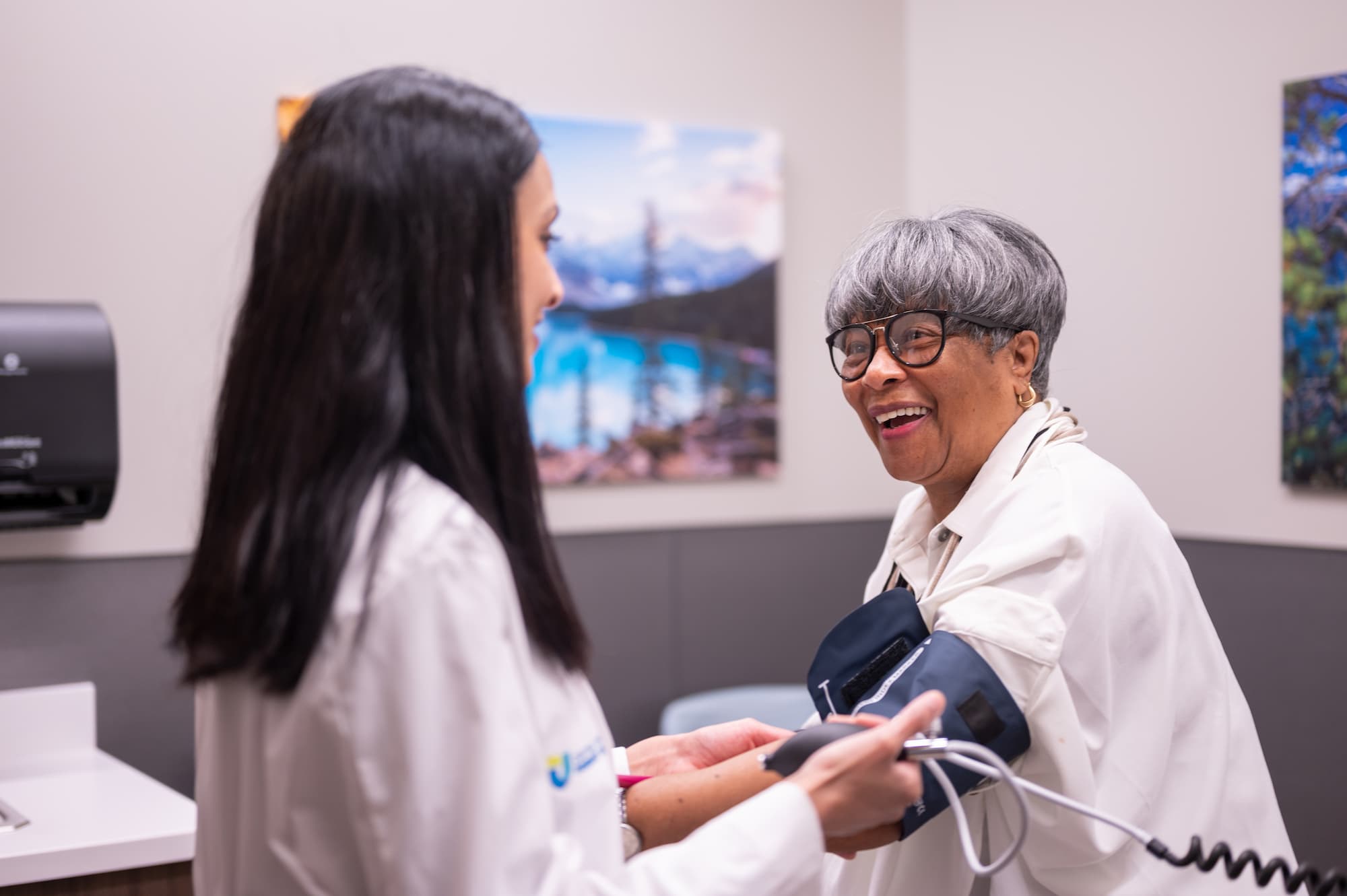Reimagining care for senior patients is grounded in our belief as a Network that improving the quality of care we deliver is paramount. This truth – which underlies everything we do within the agilon health care model – is especially relevant to how we advance our clinical strategy and capabilities to support our physician partners. Let’s talk about how we are directing the integrated power of agilon’s full-risk model toward improving quality of care for heart failure patients, a significant health concern for senior patients.

Clinical innovation in action
Today, over one-third of seniors in the U.S. are affected by heart failure*[i], and many of them are not on target doses of guideline-directed therapy. Moreover, about half of heart failure diagnoses in seniors are made at the time of the first emergency department (ED) visit or hospitalization. This moment of diagnosis is both too late and in the wrong location for optimum health outcomes. At this point, a patient has likely already experienced irreversible damage to their heart. The patient has also been subject to a hospital stay to receive a diagnosis that could have been made in the outpatient setting.
Through our integrated model, we can identify patients at high risk of heart failure and intervene before care needs become acute. This includes testing patients at increased risk of heart failure, followed by providing the appropriate care to prevent disease progression, alleviate symptom burden, and avoid unnecessary utilization like heart failure-related ED visits and hospitalizations down the road.
That’s why we are developing “clinical pathways” as a set of clinical products within our model. Our clinical pathways are intended to reimagine how we better deliver end-to-end care (i.e., early diagnosis, guideline-driven treatment, connectivity to high-quality specialists) for a subset of chronic conditions that significantly impact quality of life for our seniors and where we have an opportunity to rethink the status quo.
In reimagining the care journey for these select chronic conditions, we assemble diverse teams that include national experts, our physician partners and multiple functional areas across agilon health to create patient-focused, physician-driven and technology-enabled clinical pathways. To further support implementation of our clinical pathways, these teams develop best-in-class engagement and educational materials to support our physician partners in accessing the latest best practices.
Through our heart failure clinical pathway specifically, we have the opportunity to move more heart failure diagnoses to the primary care doctor – a shift that aims to connect patients to needed treatment and risk factor modification years earlier – and create more efficient and effective systems for connecting heart failure patients to guideline-directed medication therapy. To better support primary care doctors and patients in medication management for heart failure, we offer a pharmacy solution and high-quality specialty care options when clinically appropriate, while ensuring continuity and coordination of care.
As we continue to scale our heart failure clinical pathway program, we are seeing great results:
- We have reduced inpatient heart failure diagnosis rates from 18% of new diagnoses in 2024 to 5% of new diagnoses in 2025.
- In markets where we have virtual pharmacy solutions active, we are seeing ~50% of heart failure with reduced ejection fraction patients on guideline-directed medication therapy (compared to national averages below 20%).
- Similarly, in markets where we have deployed a combination of virtual pharmacy and focused transitions of care cardiology integration, we are seeing 30-day readmit rates for heart failure patients below 5% (compared to national averages of ~20%).
Changing patients’ lives
Every physician knows that the most powerful metric is the lived experience of our patients. Across our Network of physician partners utilizing the heart failure clinical pathway, the model’s value shines through in stories of their patients. My colleague and our physician partner, Dr. Vikki DiGennaro from Pioneer Physicians Network in Akron, OH, recently shared an example that perfectly captures this dynamic.
Our data identified a patient at high risk for heart failure at Dr. DiGennaro’s practice and suggested in-office testing. The resulting positive diagnosis prompted conversations in which the patient revealed previously undisclosed leg swelling. Armed with more and better information, Dr. DiGennaro was able to direct the patient to appropriate medication therapy. Within a month, the patient reported that the leg swelling had resolved, and she was feeling better than she had in a long time.
Without our integrated clinical pathway of early, data-informed testing and diagnosis, prompt intervention and timely follow-up, this patient could well have been among the millions whose undiagnosed heart failure leads to irreversible damage, untreated symptom burden and a downstream diagnosis in the hospital setting. Instead, they’re enjoying enhanced quality of life while avoiding the costs and disruption of hospitalization – a win for the patient and our healthcare system. In Dr. DiGennaro’s words, programs like our heart failure clinical pathway are “truly the heart of agilon’s value-based care commitment.”
Learn more
Our value-based care model, the agilon Total Care Model, helps physicians deliver high-quality, cost-effective care for seniors. At its core, we focus on proactively identifying risks and intervening early, before conditions become acute or debilitating. Our heart failure clinical pathway is a key part of this approach, strengthening our model and improving outcomes across the communities we serve.
*Classified as stage B, stage C1 or stage C2
[i] Shah AM et al. Heart Failure Stages Among Older Adults in the Community: The Atherosclerosis Risk in Communities Study. Circulation. 2017 Jan 17;135(3):224-240. DOI: 10.1161/CIRCULATIONAHA.116.023361.


